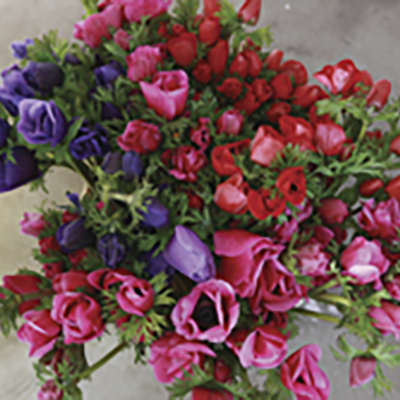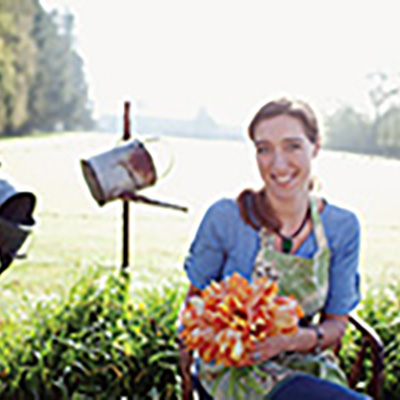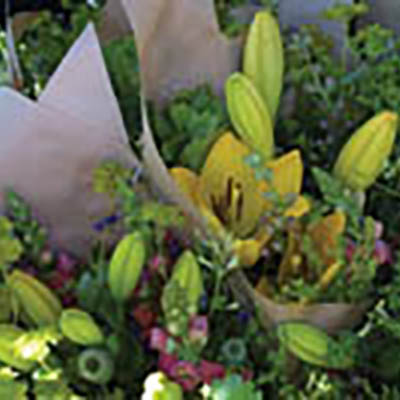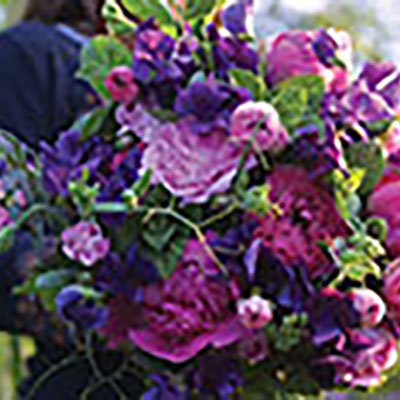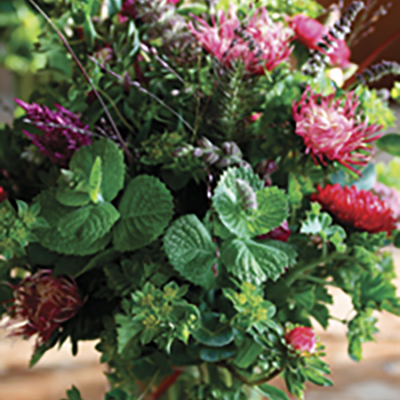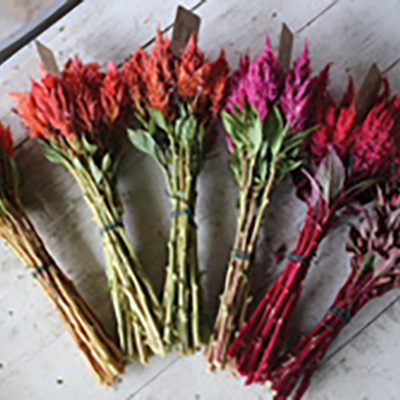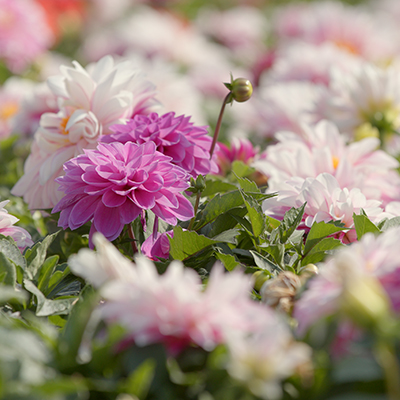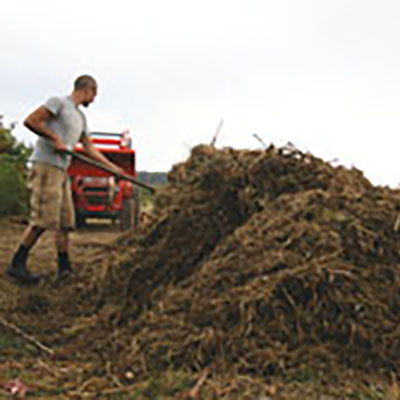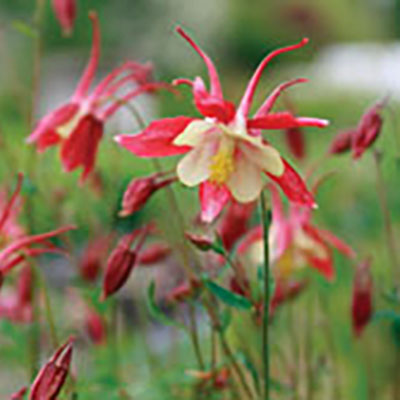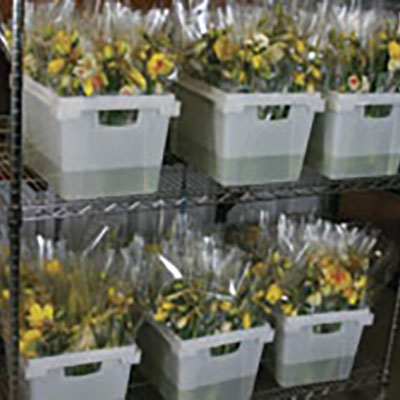My first few years as a flower farmer were a thrilling mix of hard work and overwhelming beauty. Through trial and error, and a staggering amount of work, I slowly learned how to grow top quality flowers. But once I figured out what my key crops were and how to grow them in my climate, the real work began. I had finally cracked the code on how to grow an unbelievable amount of flowers in a really small space, but what I didn’t realize is that growing is only half of the battle.
Like many small farms, the first few years here at Floret were lean. During those early days, I did a lot of cold calling, knocking on doors and desperately trying to sell the abundance pouring out of our garden. I’m not going to lie - it was a terrifying, miserable experience. For me there’s really nothing worse than approaching a complete stranger and trying to sell them something. Back then I knew very little about marketing, and assumed the way you sold something was by pointing out what the competition was doing and then how your product was superior. I thought I needed to convince potential customers that imported flowers were bad and my blooms were better. To say those early cold calls were awkward would be putting it mildly.
Around the same time, I started blogging about my experiences as a beginning flower farmer. My posts featured a lot of photos of the flowers I was growing, my children’s adventures in homeschooling and growing up in the garden and the occasional essays where I shared some of the rookie mistakes I was making. Other farmers and flower lovers stumbled across my posts and started asking for advice. As the popularity of my blog grew, I also started writing for Growing for Market and making wonderful connections in the industry. Yet, while my flowers flourished, I was still struggling to sell our farm’s abundance with ease.
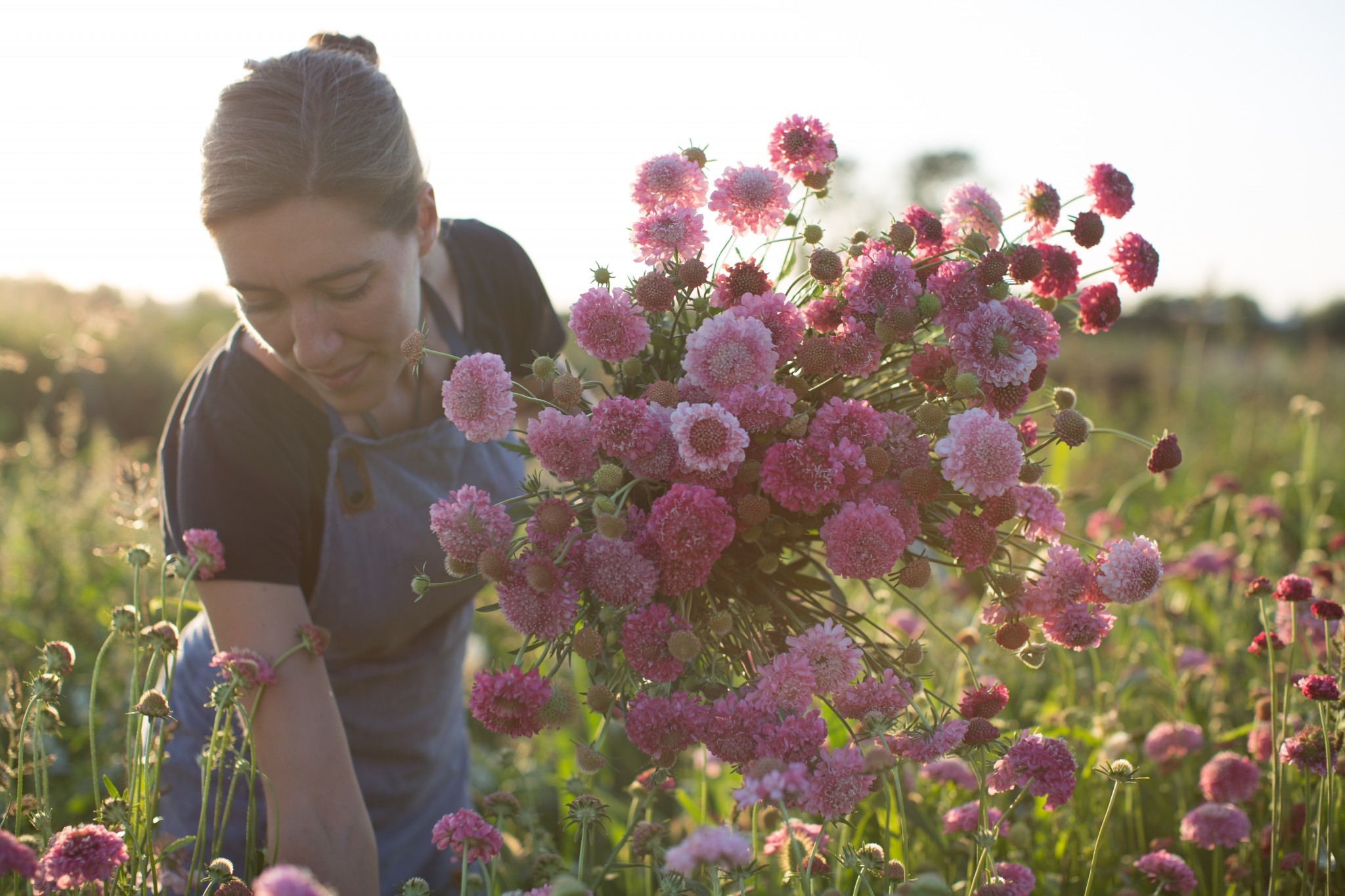
It wasn’t until I interviewed a very successful farmer for a story that the light bulb finally went on for me. She shared that she too had struggled with sales and marketing for years before finally cracking the code. Up until that point, despite having a fantastic product, sales were slow and she struggled to catch fire. In a last ditch effort to keep the business afloat, she decided to put herself on the cover of her catalog and change the business name to her own. That was the year that it all changed for her. By becoming the face of her business and putting herself out there, she turned the tides.
She shared that in the culture we live in, there is a lot of distraction. We’re constantly bombarded with so many choices, information and stimulation; people are craving a personal connection. More and more, they want to buy directly from the source. They want to know where their products came from and who made them. But when we as growers hide behind a logo or a brand name, we are missing this incredible opportunity to connect person to person.
By the end of the interview I realized where I was going wrong. On my blog and through my other writing I was sharing myself and connecting with others easily, but when it came to marketing I was trying to “sell” and driving people away.
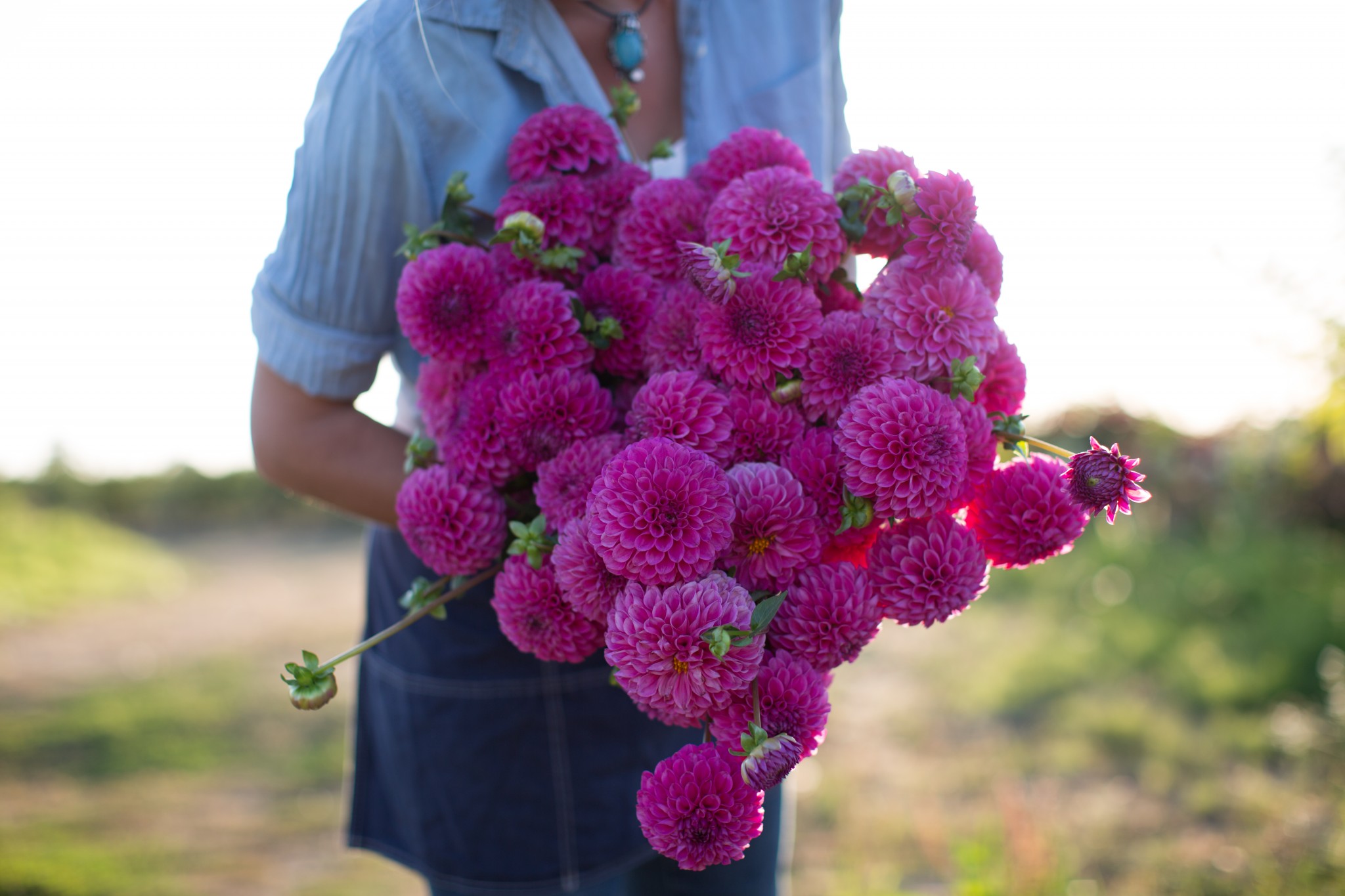
Inspired by her story, and heeding her advice, I scraped together just enough money to hire a professional photographer. It was a really big stretch at the time; I had to raid my family’s grocery money for the week to have enough to pay for the session. But when I finally got the images back from the photographer, I was blown away. I couldn’t believe how beautiful they were and how well the photos told the story of my little family and our farm.
Shortly after, I overhauled our marketing material and website. I replaced the dark, poor quality flower photos with beautiful, professional family-centered images, and then, virtually overnight, everything changed. Before long people were coming up to me in public and introducing themselves, saying they were inspired by my story and wanted to support our family’s little flower business. I never had to do another cold call again.
After that our flowers sold out every week. Then the press picked up on our story and our business bloomed. We haven’t been able to keep up with demand ever since then. Never in my wildest dreams did I imagine that a few simple changes in my marketing strategy could result in such an amazing flood of abundance and success.
Over the years I have learned so much about marketing, and now consider it one of my favorite parts of running a business. Here are a few things I’ve learned so far on this journey.
Invest in good photography
I can’t emphasize enough how important high quality photos are to marketing your farm business. Investing in professional photos for your website and marketing pieces may feel like a luxury, but I believe it is a business essential. Even a small collection of portrait, product and action shots will do wonders for your ability to connect with customers and visually share your story. My first photo shoot was a mini session because it was all I could afford. It was a whirlwind to capture it all in the allotted time, but we were able to fill our little website with beautiful, professional images.
Looking back, we never would have been able to get as much media attention as we did without investing early on in good photography. Amazingly, we were featured in some magazines and blogs solely because we had professional photos. The free publicity we received as a result was easily worth 10 to 100 times what we paid for that original photo session.
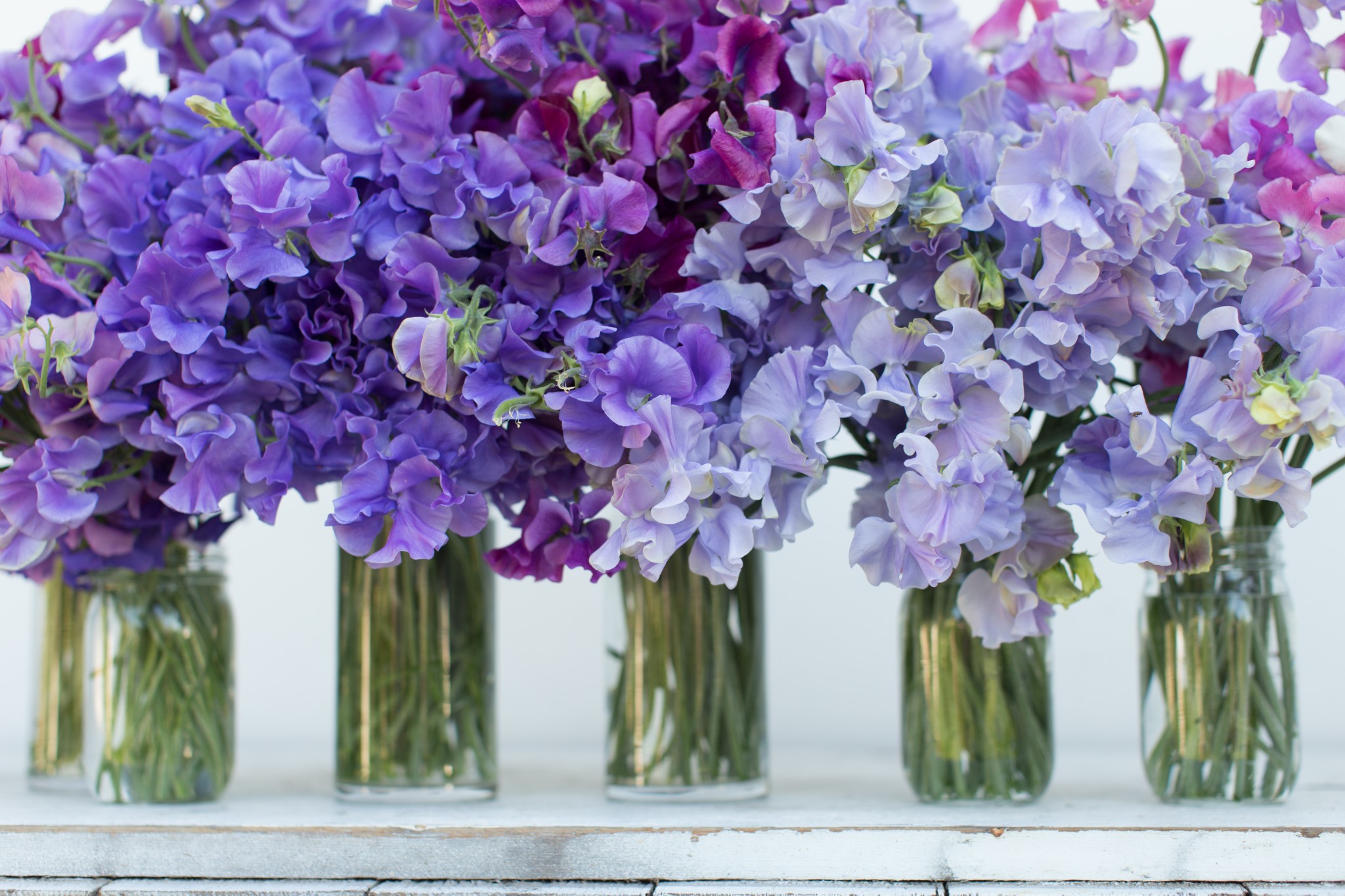
Don’t be a shrinking violet
While this adage is particularly fitting for flower farmers, it is advice I would give to any farmer or small business owner. Farmers tend to be camera shy. I remember vividly how nervous and uncomfortable I felt on the day of our first photo shoot. Being an introvert, it felt very unnatural to stand in front of the camera. Self doubt, fear and worry swirled through my head the entire time. But like anything worth doing, it stretched me to grow.
Don’t hide behind your barn, your flowers, or your logo. Your bio picture should not be a dahlia or tomato or whatever crop it is you specialize in. Customers want to see YOU and get to know YOU. Photos of inanimate objects don’t connect the way quality profile photos will.
Share your story
The “About” page of your website is arguably the most important part of your website. It’s one of the first places new customers visit and it’s the perfect place to tell your story and connect with your audience. In a world filled with distraction, consumers are hungry for authenticity. They want to connect with a real person and this is where they can get to know you in a more meaningful way.
A well written and designed “About” page can be an incredible sales tool. People won’t remember what college you attended, what degrees you hold or how long you’ve been in business. What will ultimately speak to them will be your story and your passion for farming. Don’t be shy about sharing how ecstatic you get over the first spinach and sweet pea harvest, or how deeply you care about soil health. The more real and transparent you are, the deeper the connection you can forge with your customers.

Use social media strategically
I have a love/hate relationship with social media. When used effectively, social media can be a great way to help grow your business and connect with customers and key people in your community. But without a strategy and some serious self-discipline it can quickly become just another marginally entertaining time suck.
Rather than trying to be the jack-of-all-trades and the master of none, I highly recommend picking just a couple of major social media platforms on which to focus your efforts. It is important to figure out who your target audience is and what platforms they use so you can reach them where they are.
In the flower industry, for example, it is all about Instagram. It used to take a while for floral trends to take root (think: magazines publishing photos from last year’s weddings) but Instagramers now can influence trends in just a few posts. Instagram also is the place where florists increasingly connect and communicate directly with local farmers. Some farmers even use it as an availability list. After posting a photo of an armload of freshly harvested flowers, I’ve watched florists snatch them up—right on Instagram!
I’ve seen numerous farmer-florists implement these simple tips and be rewarded with success over and over again. Marketing is more than simply promoting the crops that you grow. Your farm has a story, and that story involves you. Tell your story. Share it in photographs. And don’t be afraid to be the face of your business.
Erin Benzakein is the founder of Floret, a small flower farm in Washington’s Skagit Valley, which offers training, workshops, specialty seeds and supplies to small flower farmers around the world. Benzakein served as the Growing for Market cut flower columnist for many years and is the author of Floret Farm’s Cut Flower Garden: Grow, Harvest & Arrange Stunning Seasonal Blooms. Her Instagram account @floretflower is followed by more than 460,000 users worldwide.

